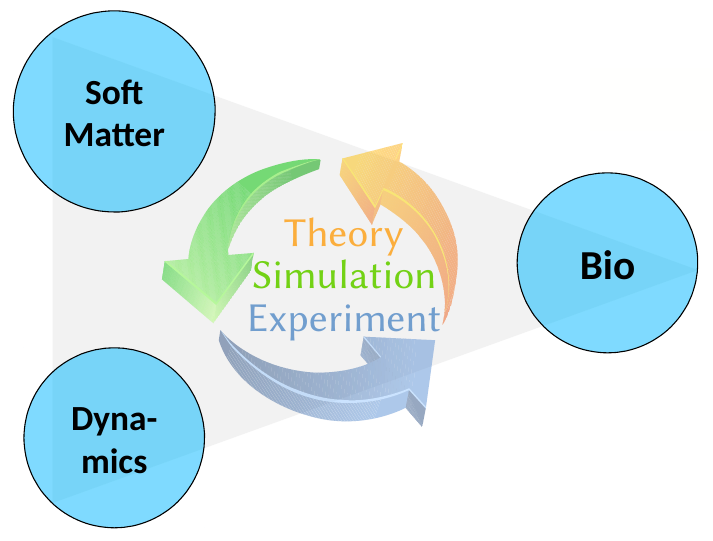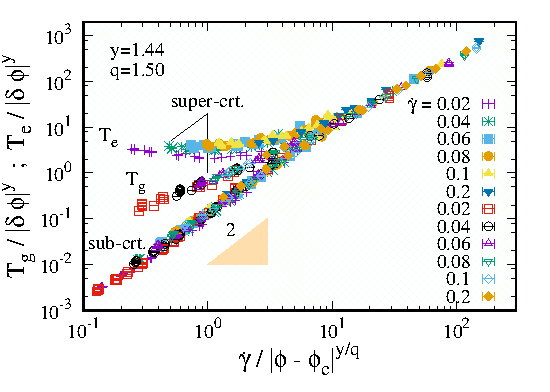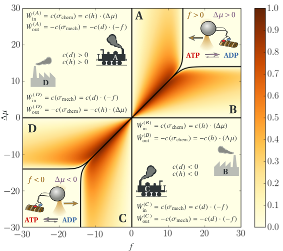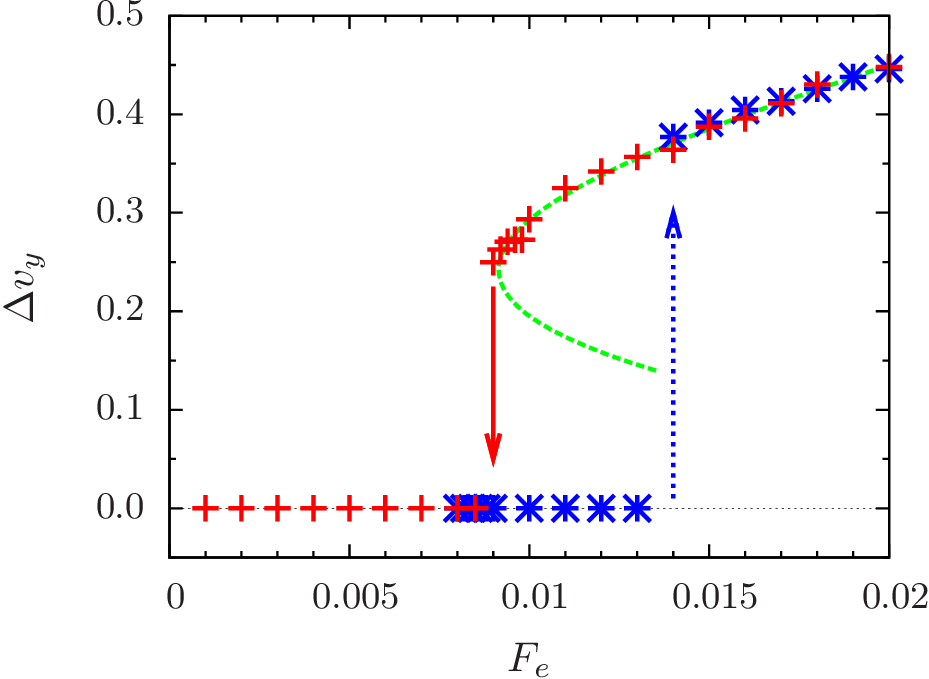Transport Processes and Self-Organization
An understanding of complex behaviour can only evolve in a feedback process. Theoretical predictions must be compared to numerical and experimental findings. Insights from the comparison will be used to further develop the model. At the Institute for Theoretical Physics of the University of Leipzig I build a new group that will performs all steps in this process:
 |
|
Soft Particulate Flows. Temperatures Far From Equilibrium.
Soft particulate materials comprise dense arrangements of entities, like bubbles or grains, that dissipate energy upon interaction. Soft particulate materials show a transition from low-density gas-like behavious to a yield-stress fluid. The transition governed by a critical point at zero shear rate and the random-close-packing density. We show that rare flucutations in these systems obey a fluctuation theorem, and that it can be used to define a temperature Te of the fluid. In the low density regime it agrees with the kinetic temperature Tg — in the yield-stress regime they differ.
with Habib Rahbari, Abbas Saberi, Hyunggyu Park

Stochastic Thermodynamics. Nonequilbrium Response in Kinesin Models.
Unlike macroscopic engines, the molecular machinery of living cells is strongly affected by fluctuations. Stochastic thermodynamics uses Markovian jump processes to model the random transitions between the chemical and configurational states of these biological macromolecules. We use our mathematical results to discuss energy conversion and nonequilibrium response in different models for the molecular motor kinesin. In which respect do they make predictions that can be distinguished in experiments?
with Artur Wachtel, Bernhard Altaner
Physical Review E 92 (2015) 042132 » Physical Review E 92 (2015) 042133 »

Breath Figures. Fractal Droplet Size Distributions.
Droplet patterns condensing on solid substrates (breath figures) tend to evolve into a self-similar regime, characterized by a bimodal droplet size distribution. The size distribution of the smaller droplets follows a scaling law characterized by a nontrivial polydispersity exponent. We point out the relation of this exponent to the fractal dimension of the gaps between the droplets, and argue that it take a non-universal value — in contrast to previous expectation.
with Tobias Lapp, Johannes Blaschke, Björn Hof, Laura Stricker
Physical Review E 92 (2015) 042406 » Physical Review Letters 109 (2012) 068701 » setup »
Wet Granulates under Shear. Arrest and Fluidization.
Small amounts of a wetting liquid render sand a stiff and moldable material. The cohesive forces between the sand grains are caused by capillary bridges at the points of contact. Due to the finite strength of these bridges wet sand undergoes a transition from an arrested – i.e., solidified – to a fluidized state under an externally applied shear force. We have investigated the fluidization and the arrest of flow by numerical simulations, and provided a quantitative theory for the parameter dependence of the thresholds.
with Habib Rahbari, Martin Brinkmann, Stephan Herminghaus, Klaus Röller
EPL 87 (2009) 14002 » Physical Review E 86 (2012) 031301 » Physical Review E 82 (2010) 061305 » Journal Fluid Mechanics 738 (2014) 407 »

Precipitation. Rain Formation due to Net Droplet Growth.
From a conceptual point of view rain formation addresses the demixing of a binary fluid mixture under gravity. It is a two stage process. Initially droplets grow diffusively by collecting supersaturation from the continuous phase. Subsequently, when the droplets have grown to a size, where their Pèclet number is of order unity, buoyancy substantially enhances droplet growth. The dynamics approaches a finite-time singularity where the droplets are removed from the system by precipitation. Augmenting our description of diffusive droplet growth with sedimention induced collision leads to a quantitative description the time scale for rain initiation.
with Tobias Lapp, Martin Rohloff